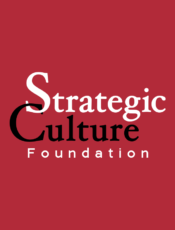Kishore Mahbubani’s new book argues that China’s rejuvenation is not driven by missionary impulse, a fact a flagging US refuses to see
Pepe ESCOBAR
As a living embodiment of how East and West shall meet, Mahbubani is immeasurably more capable to talk about Chinese-linked intricacies than shallow, self-described Western “experts” on Asia and China.
Especially now when demonization-heavy hybrid war 2.0 against China is practiced by most factions of the US government, the Deep State and the East Coast establishment.
Distinguished fellow at the National University of Singapore’s Asia Research Institute, former president of the UN Security Council (from 2001 to 2002) and the founding dean of the Lee Kuan Yew School of Public Policy (2004-2017), Mahbubani is the quintessential Asian diplomat.
Ruffling feathers is not his business. On the contrary, he always deploys infinite patience – and insider knowledge – when trying to explain especially to Americans what makes the Chinese civilization-state tick.
All through a book elegantly argued and crammed with persuasive facts, it feels like Mahbubani is applying the Tao. Be like water. Let it flow. He floats like a butterfly reaching beyond his own “paradoxical conclusion”: “A major geopolitical contest between America and China is both inevitable and avoidable.” He centers on the paths towards the “avoidable.”
The contrast with the confrontational, stale and irrelevant Thucydides Trap mindset prevalent in the US could not be starker. It’s quite enlightening to observe the contrast between Mahbubani and Harvard University’s Graham Allison – who seem to admire each other – at a China Institute debate.
An important clue to his approach is when Mahbubani tells us how his Hindu mother used to take him to Hindu and Buddhist temples in Singapore – even as in the island-state most Buddhist monks were actually Chinese. Here we find encapsulated the key cultural/philosophical India-China crossover that defines “deep” East Asia, linking Confucianism, Buddhism and the Tao.
All about the US dollar
For Asia hands, and for those, as in my case, who have actually lived in Singapore, it’s always fascinating to see how Mahbubani is the quintessential Lee Kuan Yew disciple, though without the haughtiness. As much as his effort to understand China from the inside, across the spectrum, for decades, is more than visible, he’s far from being a disciple of the Chinese Communist Party (CCP).
Inescapably, Mahbubani outlines both Chinese and American geopolitical and geoeconomic challenges and shortcomings. And that leads us to arguably the key argument in the book: how he explains to Americans the recent erosion of global trust in the former “indispensable nation,” and how the US dollar is its Achilles’ heel.
So once again we have to wallow in the interminable mire of reserve currency status; its “exorbitant privilege,” the recent all-out weaponization of the US dollar and – inevitably – the counterpunch: those “influential voices” now working to stop using the US dollar as reserve currency.
Enter blockchain technology and the Chinese drive to set up an alternative currency based on blockchain. Mahbubani takes us to a China Finance 40 Forum in August last year, when the deputy director of the People’s Bank of China, Mu Changchun, said the PBOC was “close” to issuing its own cryptocurrency.
And that leads us to the role of the US dollar in financing global trade. Mahbubani correctly analyzes that once this is over, “the complex international system based on the US dollar could come tumbling down, rapidly or slowly.” China’s master plan is to accelerate the process by connecting its digital platforms – Alipay, WeChat Pay – into one global system.
Asian Century
As Mahbubani carefully explains, “while Chinese leaders want to rejuvenate Chinese civilization, they have no missionary impulse to take over the world and make everyone Chinese.” And still, “America convinced itself that China has become an existential threat.”
The best and the brightest across Asia, Mahbubani included, never cease to be amazed at the American system’s total inability to “make strategic adjustments to this new phase in history.” Mahbubani dedicates a whole chapter – “Can America make U-turns?” – to the quandary.
In the appendix he even adds a text by Stephen Walt debunking “the myth of American exceptionalism.” There’s no evidence the Exceptionalistan ethos is being seriously contested.
A recent McKinsey report analyzes whether the “next normal” will emerge from Asia, and some of its conclusions are inevitable: “The future global story starts in Asia.” It goes way beyond prosaic numbers stating that in 20 years, by 2040, “Asia is expected to represent 40% of global consumption and 52% of GDP.”
The report argues that, “we may look back on this pandemic as the tipping point when the Asian Century truly began.”
In 1997, during the same week when I was covering the Hong Kong handover, I published a book in Brazil whose translated title was 21st: The Asian Century (excerpts from a few chapters may be found here). By that time I had already lived in Asia for three years, and learned quite a few important lessons from Mahbubani’s Singapore.
China then was still a distant player on the new horizon. Now it’s a completely different ball game. The Asian Century – actually Eurasian Century – is already on, as Eurasia integration develops driven by hard-working acronyms (BRI, AIIB, SCO, EAEU) and the Russia-China strategic partnership.
Mahbubani’s book, capturing the elusive, unbearable lightness of China, is the latest illustration of this inexorable flow of history.
Has China Won? The Chinese Challenge to American Primacy (Kishore Mahbubani), published by Public Affairs (US$19.89).








